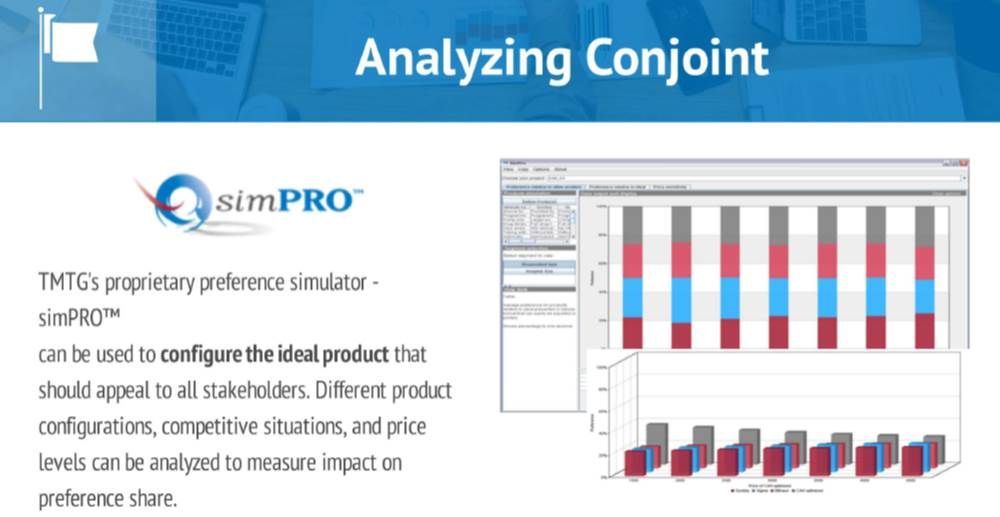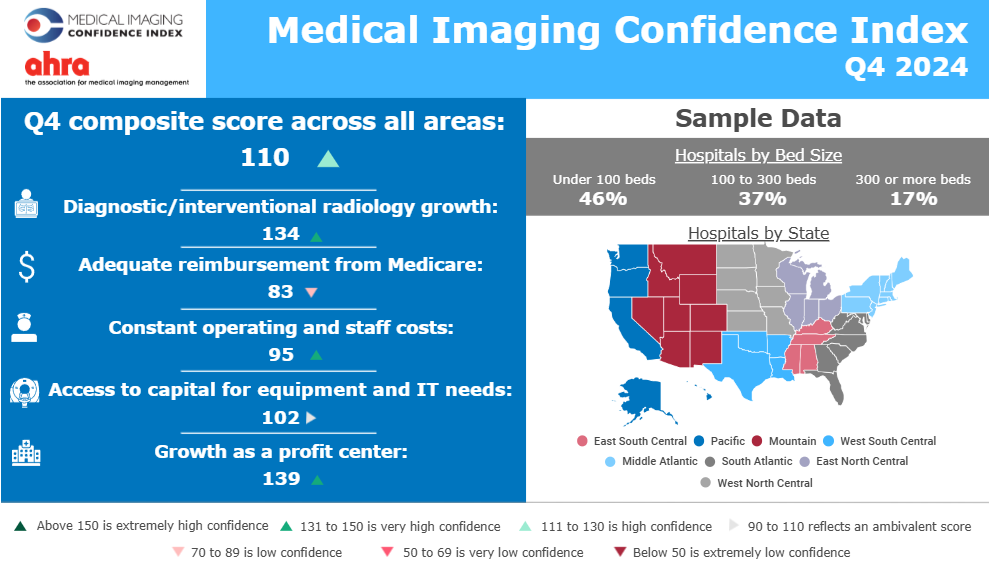CHOICE-BASED CONJOINT: GAUGING CUSTOMER PREFERENCE
Share this article:
Why Conjoint?
Conjoint is a technique that creates realistic consumer choice situations and forces respondents to choose among a variety of products with different features and prices. Analyzing these tradeoffs helps researchers to understand what features are more important (relatively speaking) than other features. If we ask someone about the importance of a feature, we tend to find that everything is important. However, when forced to choose among various product sets, we can determine which combination of features has the highest preference and identify a price that maximizes preference for respondents and profit for our client.
How Can TMTG Help?
While conjoint seems like an accessible tool offered in most survey platforms that can be used to help your team design / test new products, reliably analyze willingness to pay, optimize a portfolio of products, make pricing decisions, or even test brand premium, the science and art involved for robust data and trustworthy is essential and not trivial. Conclusions drawn from conjoint analysis will only be as good as the initial model design. The choice of attributes and levels needs to take into account current and future competitive offerings and choice tasks must feel realistic and engaging, which requires careful consideration of the number of tasks, number of profiles, attribute and level design, and timing. The MarkeTech Group has over 20 years of experience guiding top-tier health care companies through the conjoint design process and providing their teams with high-quality, actionable results.

Number of choice tasks
Choice tasks show several product variations or profiles for respondents to choose from. The respondent selects their preferred product on each screen after comparing the products available. Each new screen will have a different set of products. The more tasks that are seen, the more data that is available to create a good estimate of preference. Studies with a small number of attributes and levels can be performed with as few as 4-6 tasks per respondent. Larger studies can take as many as 12 or more tasks per respondent. TMTG recommends between 8 and 12 tasks for most discrete choice studies.
Number of Profiles
Think of profiles as the products included in each choice task. Recent research suggests that 2-3 per screen may be optimal to ensure respondents are engaged and making decisions based on all the features rather than a select few. TMTG generally recommends no more than three per screen. This is because our studies tend to be about products with complex engineering features that are often innovative. Respondents are likely to be unfamiliar with these features and so evaluating each profile will require more cognitive effort than many basic consumer studies. As such, it is important not to overwhelm them with too many choices per screen.
Attributes and Levels
Attributes are overarching features or benefits of a product or solution that are relevant for customer choice / purchase decision. Features such as color, size, or speed or benefits such as workflow improvement or cost savings are good examples of attributes because they can be broken down into discrete categories which are called levels. For example, levels within the ‘color’ attribute would be any color considered for the product.
The most important rule when designing a conjoint model is that the attributes must be independent of one another – not collinear. For example, if assessing a car, we know that horsepower, engine size, and gas mileage are collinear. A high-horsepower engine will not get as good of gas mileage as a smaller, lower-powered engine. As such, it is important to design a conjoint study that has minimal or no collinear attributes.
It is also advisable not to have a large number of attributes. Too many attributes will overwhelm the respondents when making product choice decisions and likely result in an outcome that does not reflect market reality. As experts in conjoint design, TMTG recommends that the exercise be limited to seven or fewer attributes to focus only on the most salient features that would differentiate between two similar products. Some researchers exceed our recommendation and it will depend greatly on the type of product and the complexity of the attributes – more complexity and samples smaller than 100 will likely require fewer attributes.
It is similarly important not to have a large number of levels within a given attribute. We recommend between
3 and 5 levels per attribute. It is acceptable to exceed five levels, but use caution and consider the effect it could have on the cognitive effort required for respondents. More levels can make one attribute appear more important than other attributes, although the use of hierarchical Bayes to estimate individual utilities has largely mitigated this concern.
Timing
The amount of time spent in a conjoint exercise depends on the number of choice tasks and profiles. The first task always takes the longest because respondents need to become familiar with the exercise and layout. Based on our extensive experience with conjoint in the MedTech space, an average US respondent takes between 35-45 seconds on the first task (3 products per task) and the second task requires 20-25 seconds. EU respondents generally take longer to evaluate the first 2-3 tasks before their speed improves. Both US and EU respondents tend to average 15 seconds per task by the end of the exercise.





